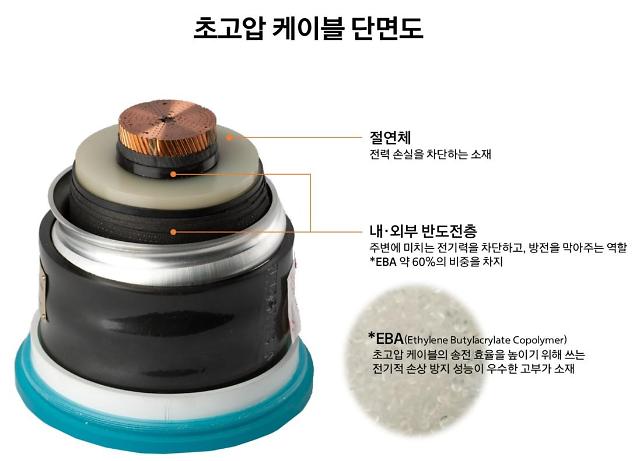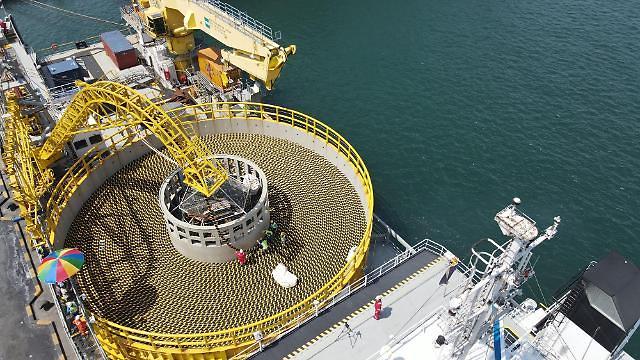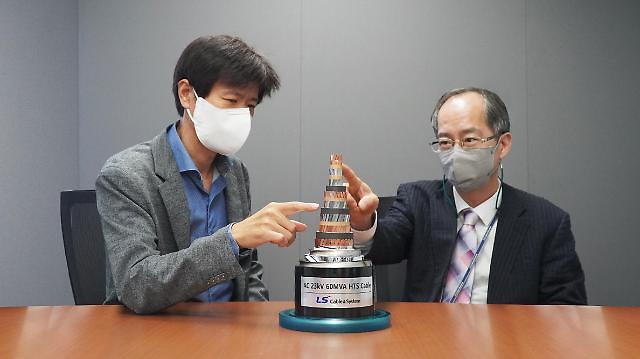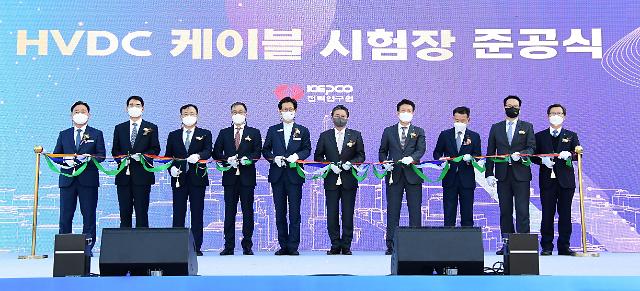
[Courtesy of Hanwha Solutions]
SEOUL -- Through five years of research to acquire independent technologies in a market dominated by big foreign firms, Hanwha Solutions, a renewable energy service provider affiliated with South Korea's Hanwha Group, is ready for the commercial production of ethylene-butyl acrylate copolymers, which are an effective insulation material for high-voltage direct-current power cables.
Acrylic copolymers are transparent thermoplastic copolymers of ethylene and acrylate with exceptional low-temperature flexibility and impact resistance. They are frequently blended with other thermoplastics to improve their processability and enhance their performance. Ethylene-butyl acrylate (EBA) is a copolymer consisting of ethylene and butyl acrylate prepared by high-pressure radical polymerization.
Hanwha Solutions has achieved the localization of EBA production for extra-high voltage cables through research that began in 2017. Commercial production is to begin in the second quarter of 2022 at a plant capable of producing 40,000 tons per year in the southeastern industrial city of Ulsan. The company said more than 6,000 tons of EBA are used annually in South Korea.
"In the era of carbon neutrality, energy-efficient cables are in the spotlight, and the localization of EBA, a key material for extra-high voltage cables, has become more meaningful," Hanwha Solution's PO division head Moon Kyung-won said in a statement on January 13.
The EBA copolymer is resistant to heat and moisture and has excellent electrical damage prevention performance. It is used for power cables that require high quality, such as submarine cables connecting offshore wind power plants and land substations as well as cables used for energy transmission and distribution at large power plants.
The global EBA market is growing rapidly due to investment in infrastructure for renewable energy power plants and tje replacement of old power grids. Hanwha Solutions aims to package EBA with cross linked-polyethylene (XLPE), another key material for power cables, for exports to major overseas markets such as China and the Middle East.
XLPE is used predominantly in building services pipework systems, hydronic radiant heating and cooling systems, and insulation for high voltage electrical cables. .
-0-
Copyright ⓒ Aju Press All rights reserved.




View more comments